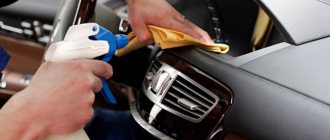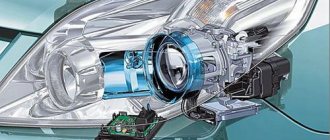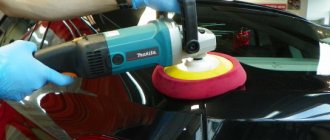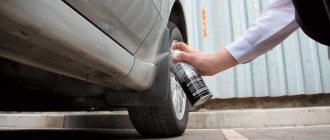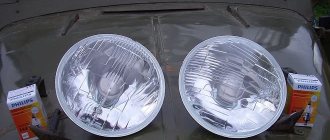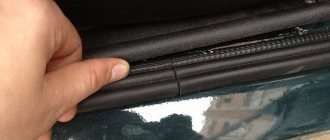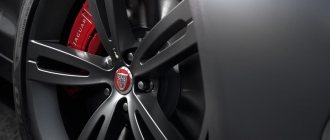For safety reasons, Russian motorists need to change the tires on their car twice a year, putting on winter tires before the immediate arrival of winter, and summer tires immediately after the ice and snow melt. After all, untimely replacement of tires can affect the car’s handling and the safety of passengers.
Many also believe that there are replacement deadlines regulated by law and penalties for non-compliance. In fact, there is a regulatory provision on deadlines, but the current administrative legislation in 2021 does not in any way punish drivers who did not take care of “re-shoeing” the car in time.
Attention! If you have any questions, you can chat for free with a lawyer at the bottom of the screen or call Moscow; Saint Petersburg; Free call for all of Russia.
Normative base
Legal regulation in the field of installation and use of tires on vehicles in the summer is carried out by the following legislative acts:
- Technical regulations TR CU 018/2011 – regarding the timing of replacement of winter tires.
- Appendix 1 to Government Decree No. 1008 of December 5, 2011 - on what criteria tires must meet in order for the car owner to successfully pass inspection.
- Section 5 of the “List of faults and conditions under which the operation of the vehicle is prohibited”, contained in Government Decree No. 1090 of October 23, 1993, states that if the tires do not meet which parameters, the operation of the vehicle is prohibited.
- Chapter 12 of the Code of Administrative Offenses – on liability for non-compliance with the legislation on the use of tires.
Expert opinion
Yulia Kablinova, who is the coordinator of a public movement called “Blue Buckets,” advised drivers not to rush into replacing winter tires. In her opinion, even because the asphalt road surface has become visible and most of the snowdrifts have already melted, there is no need to rush to replace tires. The ground is still cold and any drop in temperature can lead to the formation of ice on the road surface. It is possible that frosts may still return to the capital region.
According to the expert, the risk of skidding increases on ice. In addition, dirt that can get onto the road can also cause an accident.
Yulia Kablinova advises visiting tire stations at the end of April or in the first ten days of May. During this period, the average daily temperature in Moscow is usually within climatic norms.
When is it legally necessary to install summer tires?
In 2021, based on clause 5.5. Appendix 8 to the Technical Regulations TR CU 018/2011, you cannot drive a car with studded tires in the summer months:
- June;
- July;
- August.
It turns out that if a car owner drives on studded tires in winter, then they must be replaced (by law) before June 1, 2021. If this is not done, the law will be considered violated.
In ab. 2 clause 5.5. Appendix 8 to the Technical Regulations TR CU 018/2011 states that you cannot drive a vehicle that does not have winter tires in:
- December;
- January;
- and February.
As you can see, it is prohibited to replace studded tires with summer tires before March 1 - this would be a violation of the law.
Accordingly, you need to change winter tires with studs to summer ones on any day of spring, that is, from March 1 to May 31. Other types of winter tires (without studs) do not need to be changed by the summer, and it is completely legal to drive.
Content:
- Differences between individual tire types
- When is it legal to change winter tires to summer tires?
- Expert advice on changing winter tires
- Consequences of untimely replacement of winter tires
- How can you tell if your winter tires are worn out and need to be replaced?
- Conclusion
To ensure driving safety and comfortable driving, one of the main principles must be observed: winter tires are installed as early as possible, summer tires as late as possible. However, if you want to more accurately navigate the optimal timing, read this article, which will help you understand all the intricacies of using seasonal tires, and also tell you what restrictions exist by law and what the penalties are for non-compliance.
Requirements for summer tires in 2021
Requirements for summer tires in 2021 are presented in Section 5 of Appendix 8 to the Technical Regulations TR CU 018/2011:
- The vehicle must have tires recommended by the manufacturer;
- The tire size must match the wheel rim;
- according to the speed category and load-bearing capacity index, the rubber must correspond to the maximum speed of the vehicle according to the technical documentation and the permissible weight per tire (for example, the 82H marking will mean that the tire can be installed on a car with a maximum speed of up to 210 km/h and in the case if it does not bear a load of more than 475 kg);
- The tread height of summer tires must be more than 1.6 mm (for cars, trucks weighing up to 3500 kg and trailers up to 3500 kg), 2 mm for buses, 0.8 mm for motor vehicles, 1 mm for all others (trucks and trailers over 3500 kg);
- damage to tires is not allowed (various punctures, through and non-through cuts), exposing the cord, delamination of the carcass, sidewall, or sealing layer.
What is better - “Scandinavian” or “European” type of tires?
Winter tires are divided into “Scandinavian” and “European” according to their tread pattern.
Types of protectors
The “Scandinavian” type of rubber has a more sparse pattern, with a large number of small diamond-shaped checkers arranged in a checkerboard pattern. The distance between the checkers is significant. Thanks to this, the tread easily pushes through the top surface of the ice and is cleared of dirt and snow without any effort. Maximum grip on snowy roads is the main advantage of these tires.
Scandinavian-type tires are great for cross-country trips and for residents of remote cities, that is, where there is a lot of snow. With them you won't get stuck in snowdrifts. The Scandinavian type of rubber is widely used in all-Russian conditions and the northern regions of Europe.
“European” rubber is a diagonal pattern with multiple drainage channels and a large number of small slots. The purpose of such tires is to provide maximum grip on the road surface during rainy and wet weather , as well as in wet snow.
If the winter has little snow and is wet (countries of Central and Southern Europe, southern regions of the Russian Federation), you should opt for European-type tires. But you need to remember - ice is contraindicated for such rubber . Almost always, European-type tires are marked “M+S,” which means snow and mud.
Driving on all-season tires in the summer season
“All-season” is tires that are designed for use at any time of the year - both winter and summer.
These types of tires are not equipped with anti-skid studs, which means that they can be legally driven in the summer (after all, in the summer months it is prohibited to drive only a vehicle with studded tires).
However, during the hot season in Russia, it is still not recommended to use all-season tires, since they are intended for countries with a mild climate - where there are no significant differences in air temperature between seasons. It’s better to go to a tire shop and install standard summer tires.
Choosing a tire shop
If you have experience, tools and certain skills, you can change tires yourself. But it’s easier to contact tire fitting specialists. For little money they will quickly and efficiently replace tires. In order not to make a mistake when choosing a service, you should pay attention to the following points:
- availability of tire manufacturer certificates;
- quality of tools and organization of their storage;
- approach to the work (for example, the responsible foreman uses a dynamic wrench to check the tightness even after working with a wrench);
- how is communication with the client conducted, do specialists answer all questions;
- price does not always indicate the level of service;
- reviews from friends and on the Internet;
- It may be easiest to contact an authorized dealer to carry out the work.
Riding on Velcro during the summer months of the year
Among motorists, “Velcro” (friction tires) are winter tires that are not equipped with studs.
In accordance with Technical Regulations TR CU 018/2011, you can drive on such tires all year round. After all, tires with studs are prohibited in summer, but Velcro does not have them. Just as you can drive in winter, because it is winter and has the appropriate markings (MS, M & S, M + S).
However, like all-season tires, Velcro tires are highly not recommended for use in the hot season, primarily due to the “softness” of the rubber compound used in their manufacture. Otherwise, the following consequences are possible:
- loss of controllability;
- increase in braking distance;
- acceleration of tire wear;
- increased fuel consumption.
Differences between individual tire types
Before answering the question about the timing of replacing used tires with new tires, let’s take a closer look at the various options for car tires. The market offers a wide range of models from different manufacturers. All options can be divided into 3 main categories:
- Winter tires;
- summer tires;
- all-season.
Tires from the first group are also divided into studded and friction (so-called “Velcro”). All tires differ in their performance properties, as they have different tread patterns and a special rubber compound composition corresponding to the nature of the operation. For example, in winter it is important that the car maintains high maneuverability in deep snow, can freely drive through slush and mud, brake effectively on ice and accelerate just as quickly. In this regard, tires used in the cold season are equipped with the following characteristics:
- large blocks and deep tread;
- a large number of multidirectional lamellas in the pattern;
- the use of a compound that maintains elasticity at low temperatures.
Unlike summer tires, winter tires can additionally be equipped with metal toe studs. This helps maintain stability on icy roads. However, the use of spikes is not always appropriate, and in some countries it is completely prohibited. The thing is that metal inserts increase the weight of the wheel, spoil the asphalt surface and increase the noise level. Therefore, it is worth using studded winter tires in regions with a cold climate or if you often travel outside the city, where the roads are not covered with reagents and are not cleaned as often. A special marking will help you understand that you have winter tires: M&S (sometimes may be designated as M+S). This indicates that the rubber properties are designed to work in mud and snow. Additionally, the tires may have a pictogram depicting a snowflake against the backdrop of the Trek Mountains. This marking indicates that the tires are suitable for use in harsh and cold winter conditions. There is no pictogram or M+S inscription on summer tires.
You need to change summer tires to winter tires and back in a timely manner. Otherwise, fluctuations in weather conditions may take you by surprise and reduce your safety while driving. Practical drivers who want to save money on tire fitting often refuse to use winter and summer tires, and therefore prefer all-season tires. Such tires are suitable for use in warm and cold weather, but still cannot cope as effectively with ice and snow, braking on wet or dry asphalt, as their seasonal counterparts.
Driving in summer on tires equipped with studs
In clause 5.5. Appendix 8 to the Technical Regulations TR CU 018/2011 clearly states that you cannot drive a car in the summer (June, July, August) that has tires with anti-skid spikes installed.
It turns out that such tires can be used 9 months a year - all autumn, winter and spring. The deadline for motorists to remove winter studded wheels from their cars in 2021 is May 31.
However, you should not wait for the specified date. It is recommended to change tires with studs to summer tires, all-season tires or Velcro tires when the average daily temperature for several days is from plus 5 to 7 degrees Celsius and only after the icy and snow-covered surfaces have completely disappeared from the roads.
Which tires are better for the winter: studded or Velcro?
There are a huge number of adherents of both modifications of tires intended for the winter season. Now on the market there is an abundance of manufacturers producing seasonal tires, among which are the brands Viatti, Michelin, Pirelli and Yokohama - all produce both types of tread.
You should figure out what the essence of the debate is and start with the advantages and disadvantages of tires of Scandinavian and European construction.
- Velcro. Tires with a similar tread are suitable for urban conditions where there is no heavy snowfall or serious snow drift. Tires are recommended for comfortable driving conditions. They are distinguished by good grip on loose surfaces, moderate acoustic effects and good softness. Among the disadvantages is poor cross-country ability in deep snow and ice crusts.
- Studded. The modification can be used for rural areas or small towns where there is a lot of precipitation, variable temperatures and poorly cleaned roads. Such tires are not afraid of deep debris, ice and compacted ruts. The disadvantages include high noise, heavy weight and the possibility of losing some of the studs on bare asphalt.
Thus, which tire is better should be determined by each motorist personally. Both versions have pros and cons, and the type of terrain and driving style will tell you where the greatest benefit is.
Replacing winter tires with summer tires for trucks
More recently, owners of trucks were required to change tires at the same time as owners of cars, motorcycles, buses, etc.
That is, when driving in winter on studded tires, you had to change them to summer tires before May 31 (or earlier). And if there was Velcro, you could ride it all year round without changing it at all.
But on November 11, 2018, amendments to the Technical Regulations TR CU 018/2011 came into force, which allowed owners of all categories of cars, except M1 and N1, to drive in winter on any tires at all:
- all-season;
- “Velcro”;
- summer;
- winter
It turns out that owners of trucks of categories N2 (from 3,500 to 12,000 kg) and N3 (over 12,000 kg) can simply buy summer tires and drive on them all year round without “changing shoes.” But for those who have a car of class N1 (trucks up to 3500 kg), for the winter they still need to install tires designed specifically for use on snowy or icy surfaces.
As for the summer, the ban remained unchanged for everyone - that is, if the truck owner has tires with studs, they must be removed before May 31 - driving in the summer on such tires is prohibited. It will be possible to put on studded tires again on September 1st. No. 1, No. 2 and No. all other types of tires in June, July and August without any restrictions .
Why do car tires change at all?
It is obvious to most car owners that replacing wheels in connection with the onset of the summer or winter season is a necessity and their direct responsibility. However, there are those who are not entirely clear why this is being done. Let's figure it out.
What is the difference between winter tires and summer tires?
- Tread pattern. It differs significantly on tires for different seasons and directly affects the operating characteristics of the vehicle . Winter tires are designed to provide reliable traction of the vehicle to the road, which means its stability and good handling. In summer, on a wet road surface, a hydroplaning effect can occur, which is difficult for the car to cope with; this causes the driver a number of inconveniences and difficulties in driving. Summer tires are made in such a way that excess moisture is removed from the wheel while driving.
- Rubber composition . Winter tires are softer in composition, which ensures their flexibility even in cold weather. But in summer, such a composition has a negative impact on their performance characteristics. They become too soft, which leads to a deterioration in the car's handling when driving at speed and an increase in gasoline consumption. Summer tires have a harder composition, which allows you to move comfortably in the warm season. But in cold weather they become too hard and do not provide the necessary grip (it is about 8-10 times lower than winter tires).
We recommend
“In winter on summer tires: why this is a bad idea” More Of course
, it is necessary to completely “change the shoes” of the car, that is, change the tires to summer (or winter) on all 4 wheels.
Existing fines for improper use of car tires in 2021
In 2021, Chapter 12 of the Code of Administrative Offenses, which regulates the liability of motorists for violating traffic rules, does not contain any indication of sanctions for non-compliance with the requirements of the Technical Regulations TR CU 018/2011.
And since only it contains a mention of the timing of tire replacement, fines for late replacement of winter tires with summer tires in 2021 cannot currently be imposed.
And yet, traffic police officers have the opportunity to punish the driver with a monetary penalty. But only for non-compliance of tires with the requirements specified in Section 5 of the “List of Malfunctions and Conditions” to the Traffic Regulations. In this case, sanctions will apply under Part 1 of Art. 12.5. Administrative Code:
- warning;
- or a fine of 500 rubles.
For example, the above liability should be expected if the tire:
- has a tread height below the established values;
- has punctures, cuts, and delaminations of the frame;
- does not correspond to the speed index and weight of the vehicle model.
In addition, a warning or 500 rubles will be issued if different tires are installed on one axle of the vehicle (front or rear) on the left and right. For example, the front left has summer tires, and the front right has winter tires. Or one tire is new and the other is retreaded.
The traffic police will also fine you for installing both studded and non-studded tires on a vehicle at the same time (regardless of the axle). For example, 3 wheels have tires without studs, and the remaining one has them.
So it turns out that if you drive in the summer on the same studded tires, then there is no penalty. And if, for example, you put tires with studs, but of different sizes, on one axle in the hot season, then the driver will face sanctions under Part 1 of Art. 12.5. Code of Administrative Offences.
Maybe it's time to change your shoes - what do experts say?
If the driver travels by car within the city and at the first frost can switch to public transport, you can wait until winter to replace tires.
If you have a long journey ahead, then it’s better not to delay and change your car’s shoes. Monitoring the weather forecast will help determine when to replace your tires. If it is clear that the weather will worsen in the coming days, do not wait in line at the tire repair shop. It's better to go there in advance.
There is no point in taking great care of the tires. Its service life is 3-4 years from the date of production. Even if you don’t use it, after 4 years it will simply become stale. But using such rubber is quite dangerous.
Autumn has already crossed its equator. This means that sharp cold snaps will begin very soon. In this regard, drivers are beginning to think about the need to replace their tires with winter sets.
If the spare tire is different from those already installed on the vehicle
Each car has a spare tire, which will be needed in case one of the tires has been punctured and you need to get to the nearest tire shop without resorting to a tow truck.
In clause 5.7.4. Technical regulations TR CU 018/2011 say that different tires (winter and non-winter, for example) cannot be installed on the same axle. However, the requirements of this paragraph do not apply in the case of temporary installation of a spare wheel on the vehicle.
In this case, it is important whether the “spare tire” is on winter tires or summer tires (since the note to clause 5.7.4. applies only to this clause). That is, “seasonality” must correspond. For example, you cannot install a spare tire in the summer if it (theoretically) has anti-skid studs (but there will be no fine for this).
In clause 5.5. “The list of faults and conditions”, which contains a similar rule about the inadmissibility of installing different tires on one axle, there is no such note about the “spare wheel” as in the Technical Regulations TR CU 018/2011. Therefore, it remains unclear whether or not the driver will be able to be charged under Part 1 of Art. 12.5. Code of Administrative Offenses specifically for the temporary use of a spare wheel that is different in size or other characteristics from those already installed on the vehicle (for the out-of-season “spare wheel,” as we have already indicated, there are no fines).
Current legislature
The latest amendments to the legislation and technical regulations of the Customs Union were made in 2015, if we talk about the issue of operating seasonal tires. That’s why there were no innovations in 2021 or in 2021.
If you study this document, you can draw several main conclusions.
see also
Front strut support bearing: signs of malfunction and replacement
- Summer. This refers to the summer months from June to August. According to the rules, the car should not have winter studded tires at this time. It is forbidden. Here it would be logical to recall the material where I discussed spikes and Velcro;
- Winter. This is the period from December to February. Drivers are required to use only winter tires that bear the MS mark and a badge that shows a snowflake;
- Local authorities. All drivers in Russia cannot be brought under one rule. Indeed, in Crimea and the Krasnodar Territory, for example, weather conditions differ from those observed in St. Petersburg, the Rostov region, the Orenburg region or Volgograd, for example. At the local level, decisions are made regarding extending the service life of different types of tires. This is due to differences in climate. In this case, the regional leadership can only extend the period. But they cannot reduce generally accepted norms.
Winter Velcro or studded tires should be used during the period when summer tires are not able to cope with possible icing of the road surface. Equally important is the quality of the selected kit. Here I want to remind you about the material about Chinese tires.
Practical application of laws
Switching to new tires or tires that have been used for 1-2 seasons in a timely manner is important for your personal safety. It’s not difficult to imagine what usually happens when a car ends up with summer tires during cold weather. There are many videos with similar extreme sports. Although here I would focus on people’s lack of common sense.
It follows from the regulations that a motorist can use studless winter tires throughout the year. This is not allowed with spikes.
If the period of the year is warm and the car is shod with summer tires, then the transition to winter tires should be carried out between September and March. In the opposite direction, the operation is carried out from March to May. It all depends on how quickly warming or cooling occurs specifically in your region.
I will give several examples in specific cities.
- Moscow. Winter tires must be installed from October 15 to October 25. The transition to summer tires is regulated from April 10 to April 16;
- Novosibirsk Winter wheels should be installed from October 12 to the 17th of the same month. And to change the winter set to the summer set the period is given from April 24 to April 30.
- Perm (and the entire Perm region). Winter kits are delivered from October 12 to October 17. You should return for summer from April 17 to April 24.
These are conditional and deadline dates, since most sensible people switch to winter tires earlier, but are in no hurry to return to warm sets. Winter often drags on, the temperature during the day can be quite high, but at night the roads still freeze. Because of this, riding kits for the warm season is potentially dangerous.
Nuances
Some features:
- if you come for a technical inspection on winter studded tires in the summer, then nothing will happen (since Appendix 1 to Resolution No. 1008 does not indicate that tires are checked for their compliance with the season);
- It is unclear for how long it is allowed to put a “spare” on (it seems that only for the purpose of traveling to a place of permanent parking and/or repair);
- There was still a draft law on fines for using out-of-season tires (No. 464241-6), but it was never adopted (according to it, it was proposed to add a new part 3.2 to Article 12.5, according to which motorists would be fined 2000 rubles for violating the rules for using wheels and tires).
Several reasons to change tires in advance
When to change tires to winter ones in 2021 is up to you to decide; we will only outline the obvious reasons why it is better to do this earlier.
- Preparedness for sudden changes in weather conditions
When you change your tires to winter ones in advance, you insure yourself against the vagaries of the weather. You can safely leave the yard in the morning, even with an unexpected overnight snowfall. At the same time, your neighbors will try to get out of the parking lot on summer tires or frantically change plans and call a taxi service. - Queues at the tire shop
Every year after the first snowfall, a line of people line up at the tire shop to change their tires to winter ones. Typically, 90% of car enthusiasts put off changing tires until the last minute, creating an unhealthy rush at the first signs of real winter. To avoid wasting time standing in line, it is better to change your tires in advance. - Running in a new set of winter tires
After installing a new set of winter tires (especially models with studs), you need to break them in. This means that for approximately the first 100 km, it is important to avoid slipping and emergency braking. It is better to move at a speed of no more than 80 km/h. Experts recommend changing tires and running them in before the first snow falls.We recommend
“When to change tires to summer tires: the law and expert advice” Read more
- Comfortable conditions for changing tires
If you change tires yourself, then you can carry out this operation regardless of the queues at the tire shop. But remember that the weather is changeable and, if yesterday you could work on a warm October day, then in a week you will have to do it in freshly fallen snow or in cold rain. - Safety
If you care about safety, then the question of whether to change winter tires earlier or later has a clear answer for you. The first frosts are usually sudden, so experts recommend changing tires when the temperature drops to +7°C.However, recommendations from tire manufacturers and experienced drivers about when to change tires are just advice, and the law is already a requirement. In this regard, motorists are increasingly asking the question whether a traffic police inspector has the right to punish a driver with a fine for driving in winter on out-of-season tires.
Legality of fitting larger tires
Each car is equipped with wheels of a certain size.
In some models you can find several variations. For example, the plant offers to buy cars with ramps R15/16/17 in the factory configuration. In this case, if the client has the smallest size at his disposal, he can easily install rollers of increased diameter, allowed by the factory, without negative consequences. Installing oversized wheels (more than the maximum permissible norm) brings more problems to the driver than benefits. Additionally, this is prohibited by law. The technical regulations of the Customs Union strictly limit the use of wheels that do not comply with the technical documentation of wheeled vehicle manufacturers.
Simply put, the use of car wheels and tires not provided by the factory is prohibited. This includes impressive rollers, unwelding and other tuning.
Engine
Power units are operated in extreme conditions in winter. In some climatic zones, one month of car operation is equal to several months of operation in the summer. In order for the engine to perform well, it is better to change the oil to a less thick one, and refuel the car with winter fuel (with a high concentration of ethyl alcohols). Owners of diesel cars are recommended to use additives to prevent diesel fuel from turning into paraffin.
Gasoline engines perform better in winter - it’s difficult to recommend anything here. With diesels the situation is worse. A common problem is poor starting in the morning. In winter, the engine may not start on summer fuel. Therefore, it would not be superfluous to carry a bottle with an “anti-thickener” in the trunk.
